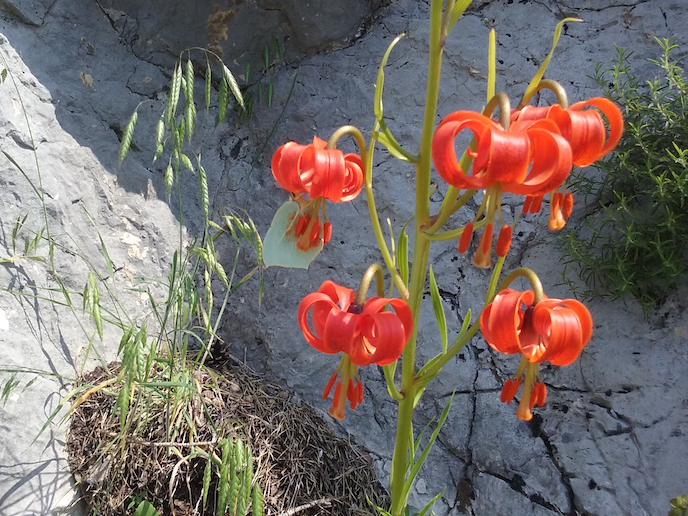Say it with flowers: how one alpine blossom is a living indicator of climate change
With its slender leaves and red, curled petals, the endemic turban lily(opens in new window), Lilium pomponium, makes a statement. What it has to say may help conservationists focus their efforts when it comes to saving the endangered plant and others like it, according to the EU-funded ADCLICH project. Found growing between 100 metres and 2 000 metres above sea level in the mountainous border between France and Italy, the turban lily’s fortunes depend on how close it is to its ideal niche. The prevailing theory in botany suggests that plants at the centre of this distribution will show the most genetic and phenotypic variability, while those at the margins are more homogenous. This is a problem, as it is those living at the margins which are most vulnerable to changes in their environment and so would benefit most from advantageous mutations to help them survive.
Living on the edge
“Usually you expect the periphery to be more prone to climate change and expect less variability and diversity there,” says ADCLICH project researcher Gabriele Casazza. “However, previous work has shown this is not always the case.” Working from Aix-Marseille University(opens in new window), at IMBE(opens in new window) in France, Casazza and project coordinator Frédéric Médail visited 21 locations across France and Italy to collect specimens, record their morphology and sequence their genetic data. They found that the distribution of the lilies and their genetic diversity do not always correlate, as the least genetically and morphologically diverse populations can actually occur near the centre of the lily’s range. “This is not truly surprising, as we found three different marginalities,” explains Casazza. “One in south-facing, low-lying locations. The second in the north-facing, high-altitude periphery. With a third near the centre, but at the lowest altitude for this species.”
Competition for pollinators
This marginality meant that the plants lying at the geographical edges of the species range might not always be the first to suffer from climate change-induced losses. “The pressures are different for different marginalities,” explains Casazza. In low-lying areas where it is warm and dry, the lilies inhabit a Mediterranean biome, with the main limiting factor being competition with other plants and disturbance by human activity. At higher, colder elevations, the short alpine growing season becomes the main constraint on the plant’s success. Low-lying turban lilies have larger flowers to better attract pollinators. Without this adaptation, the smaller alpine lilies could suffer from the increased competition for pollinators as temperatures increase and warmth-loving plants migrate up the mountain, a process known as thermophilisation(opens in new window).
Climate warning
This project was undertaken with the support of the Marie Skłodowska-Curie Actions programme(opens in new window). “This allowed me to do fieldwork across Italy and France and carry out the genetic analysis,” adds Casazza. “Now I am performing another genetic analysis to analyse the biogeographic history of the species.” The factors affecting the success of the turban lily will be put into models to help predict the impact of climate change in this critically important European biome. “It’s possible that increases in genetic diversity in marginalities means more robustness during climate change,” notes Casazza. “But this diversity may not lead to adaptability. Normally this is the expectation, but we’re not sure. This is something still to test.”







